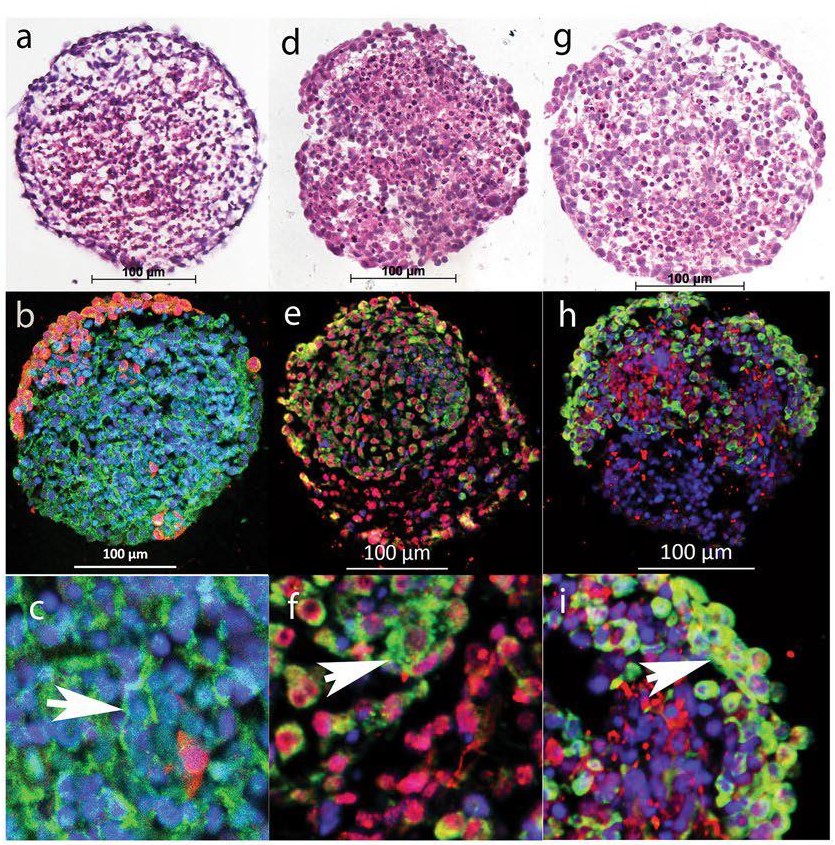The Center for Alternatives to Animal Testing (CAAT) at Johns Hopkins University in Baltimore is known for its production of human brain organoids - small spherical structures consisting of different types of nerve cells, astrocytes and oligodendrocytes. The cell types are evolved from induced pluripotent stem cells and exhibit properties similar to those found in the human brain. The scientists have now succeeded in integrating a dangerous glioblastoma type into these spherical cultures. The cells originate from a patient's own brain tumour. They used the model to test the common anti-cancer drug temozolomide and observed a regression of the tumour. In contrast, the drug had no effect on the healthy nerve cells in the spheres.

Glioblastoma tumor model. Tumor growth was observed with the GFP channel of the fluorescence microscope so that the numbers of tumor cells and healthy brain cells in the sphere could be measured independently of each other.
Source: Plummer etal. (2019: Scientific Reports 9:1407, doi.org/10.1038/s41598-018-38130-0, Creative commons 4.0
Since the complete observation of physiological processes in a three-dimensional spherical model had previously been difficult, a new technology called TMA (Spheroid Tissue Microarray Technology) of the Scottish company MicroMatrices from Dundee was also used. This enabled the visualisation of physiological processes layer by layer through the entire spherical organoid using an immunofluorescence method. In this way, the effect of the anti-tumour agent could also be observed exclusively in the tumour cells located further inside the spherical brain tumour model.
With the new in vitro model, the patient-specific anti-tumour effect can be investigated much faster than with current in vivo approaches using animals.
Sources/more information:
https://us4.campaign-archive.com/?u=066d5d7abe2de2d5e04d214bf&id=5e89919a88
http://www.micromatrices.com/technology/spheroid-tissue-microarrays/
http://www.micromatrices.com/wp-content/uploads/2017/10/SOT-spheroid-poster-2017-a-1.pdf
https://de.wikipedia.org/wiki/Temozolomid




 Dr. rer. nat.
Dr. rer. nat. Menschen für Tierrechte - Tierversuchsgegner Rheinland-Pfalz e.V.
Menschen für Tierrechte - Tierversuchsgegner Rheinland-Pfalz e.V.